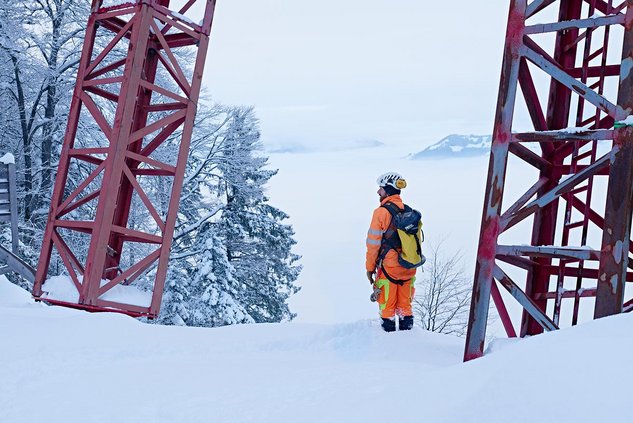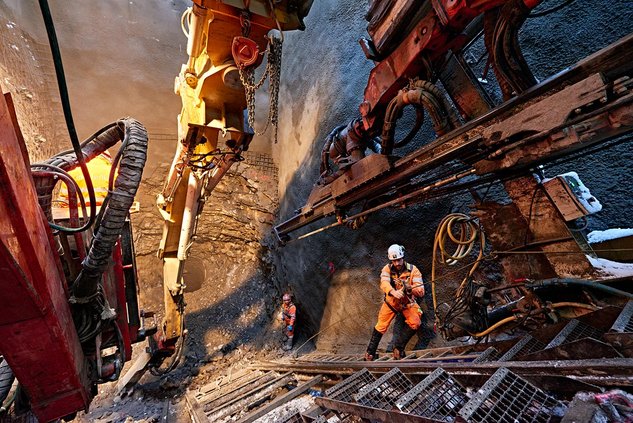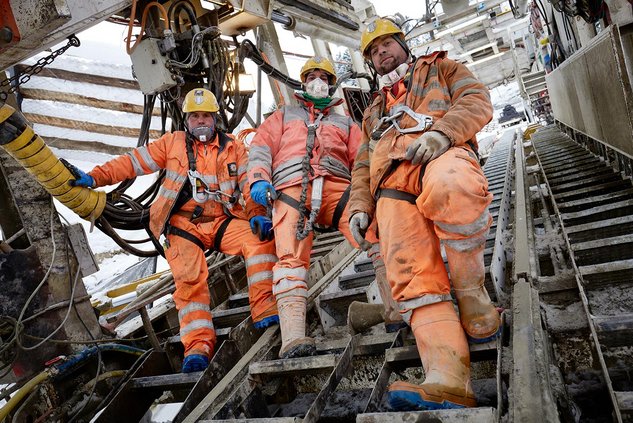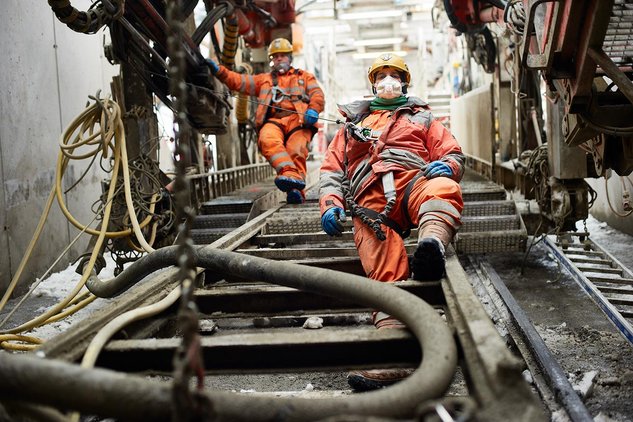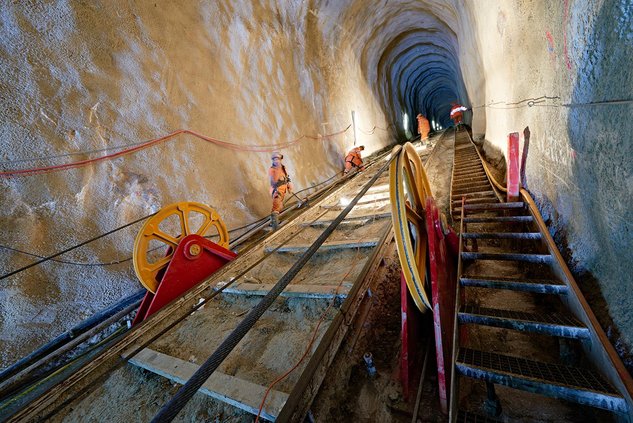Steep, steep Stoosbahn
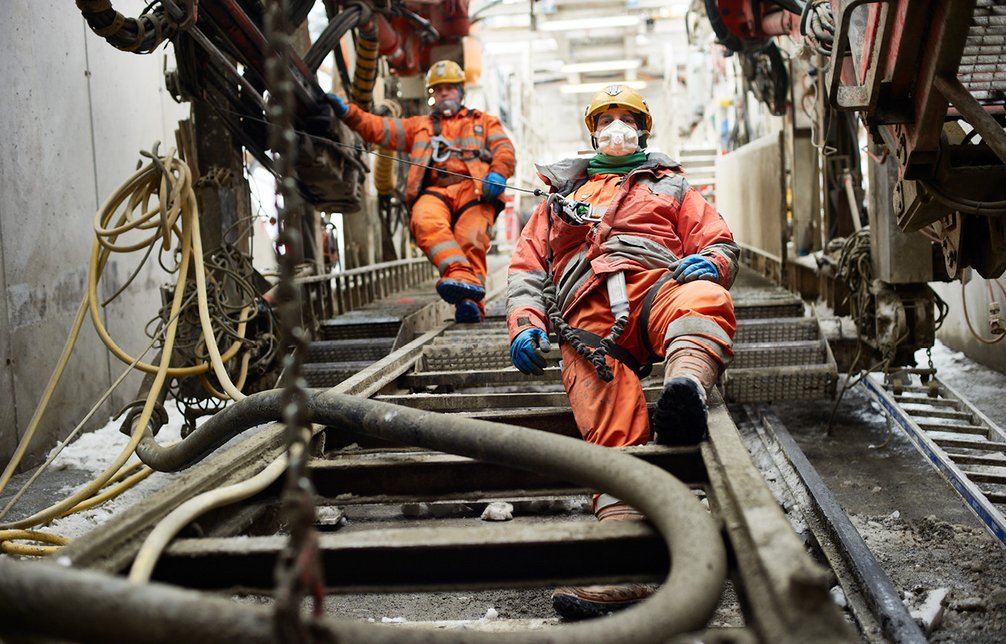
The steepest funicular railway in the world services the village of Stoos, located 1,300 metres up in the mountains of central Switzerland. Residents of the village in Canton Schwyz depend on the railway as their only year-round transport down to the valley. For tourists, the ride in one of the drum-shaped cabins, which turn to compensate for the varying slope, is a spectacular experience.
The railway opened at the end of 2017, replacing the outdated old Stoosbahn. The planners drew up a bold new route that takes a straight 1,740-metre-long line from the floor of the Muotathal valley right up to the middle of the village. With a gradient of up to 47 degrees (110 percent) the line goes through several bands of rock and involved the construction of several tunnels with a total length of almost 600 metres.
Implenia completed this unique project together with a consortium partner, and was responsible in particular for building the tunnels – a real logistical and technical challenge. The rock had to be cut through almost vertically at the steepest points, which required a special technique and a lot of creative solutions.
To access the construction site, a specialist subcontractor built a transport cable car with a payload of 7.5 tonnes directly above the railway tracks. Another partner firm used a raise drill technique to drive holes, each about 1.5 metres in diameter, into the mountain. Implenia workers then enlarged these pre-drilled holes using the drill and blast method, from the top to the bottom of the route.
Implenia used a special boring machine for the next stage, which moved downhill secured by cable winches: at the front of the machine a remote-controlled excavator arm pushed the blasted rock down into the pre-drilled shafts. The excavator was then switched for a spray head that coated and sealed the walls with concrete. The team worked down its way down the mountain like this at a rate of about nine metres a week. The boring machine was supplied on tracks by a carriage that was led up and down by cable winch.
Steep terrain, explosions, underground construction: it was clear from the beginning that this would be a high-risk construction site. Trips, slips or dropped tools and material could have had fatal consequences. Worker safety is always the top priority, but in an environment like this it was more critical than ever. Workers didn’t just wear the normal protective clothing; like mountaineers they also wore personal climbing harnesses and secured themselves with ropes while working. To this end, a special training course was provided on site for the entire construction site team.
Thanks to these and other safety precautions, there wasn’t a single significant accident or injury during the whole construction period. Implenia is at least as proud of this achievement as it is of having helped build a world record railway.

